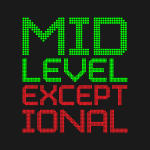Explaining Amnesty Waivers
The amnesty provision is an interesting wrinkle within the CBA. It’s a “get out of jail free card” in some senses for general managers with bad contracts on their books, but it can also help a player find his way to a more welcoming destination.
What it boils down to is this: if a player has been on a team’s roster continually since July 1, 2011 (i.e. before and since the lockout), the team can waive that player without his salary counting against the cap and the luxury tax. This was put in place to provide cap and tax relief to teams straddled with bad deals.
To date, 21 teams have exercised the provision; the Chicago Bulls are the latest, with Carlos Boozer serving as the victim.
Once a player is “amnestied,” he hits the waiver wire. But how exactly does this work? How is the amnesty waiver system different from the regular waiver system?
In some respects, amnesty waivers aren’t much different from plain old waivers. It’s a 48 hour status for a player after he has been released where other teams can place bids. If no one bids on the player after 48 hours, he is officially a free agent.
Under normal waiver rules, anyone bidding for Carlos Boozer would be doing so at a price tag of the $16.8 million that he is owed next season, via ShamSports. Boozer’s a good player, but if this were the case, I think it’s fair to say that no one would touch him on the waiver wire for that much dough.
However, teams can bid on amnestied players with something called a partial waiver claim. This means that if you’d like to have Boozer on your team, you don’t have to place a $16.8 million bid. You are allowed to place a bid somewhere between the minimum salary, which is $1.448 million for Boozer, and $16.8 million.
If you’d like Boozer, place a bid for less than $16.8 million. Hey, place a $3 million bid, and maybe you’ll end up winning. The tough part is figuring out exactly how much a winning bid will be.
There’s a bit of gamesmanship involved, as no general manager can truly know what others around the league will bid. So, if you’d really like to have an amnestied player, you might overbid a little to assure victory. A Boozer amnesty has been rumored for years, however, so I imagine that front offices around the league have done their due diligence to figure out what his market is.
The highest bid wins. If only one team enters a full waiver claim, meaning they assume the full salary that the player is owed, they automatically win. If two teams, by pure coincidence, place the exact same partial waiver claim, the team with the worst record gets the player. So, if the Milwaukee Bucks and the San Antonio Spurs both place $3 million claims for Boozer, we’d see Boozer in Milwaukee next season.
When a teams wins the bid, the next step is to figure out exactly what they need to pay the player. They will obviously pay the amount of their bid, which will be divided throughout the remaining guaranteed years on the player’s deal. Boozer only has one year left on his deal, so teams will be bidding just for one year. This is much more relevant when a player has more time left on his deal.
The auction winner will also pay non-base compensation, which includes any bonus payments.
Lastly, the winner will also pay all of the player’s salary during any non-guaranteed seasons. This is important, because during the amnesty process, the winning team typically doesn’t pay 100% of the player’s contract, with the difference being footed by the original team. Even if nobody bids for Boozer at $16.8 million, he will still get paid $16.8 million between his new team and the Bulls. It won’t count toward Chicago’s cap or tax calculations, but Jerry Reinsdorf will still have to write a check. This is why the Bulls tried every which way they could to not amnesty Boozer and trade him instead.
However, if Boozer had a non-guaranteed year for 2015-2016, the winning bidder would be on the hook for 100% of that amount.
Not everyone is allowed to bid on an amnestied player. To do so, the team must have the cap room to absorb the bid. If a team doesn’t have the cap space readily available, they can create it by waiving non-guaranteed players, but they cannot do so by making trades. This limits the number of teams that can actually participate in the amnesty waiver auction. However, if all of them pass, the player becomes a free agent, and can sign with an over-the-cap team via an exception, just like any other unrestricted free agent.
Now that the rules are explained, let’s talk a little more about a big point.
The partial waiver claim is very important. If a team decides to use the amnesty provision on a player, it’s likely because they believe the player is overpaid. If one general manager thinks this, he’s probably not alone. Thus, without the partial waiver claim, most amnestied players would go through waivers and become free agents.
Carlos Boozer was amnestied because the Bulls didn’t believe he is worth a $16.8 million cap and luxury tax hit, and I’m sure they’re not the only team with this mentality. With a partial waiver claim, however, general managers can explore whether or not he’s worth a bid less than $16.8 million.
So, there you have it: amnesty waivers. Now, we get to enjoy watching general managers around the league bid on one year of Carlos Boozer!


